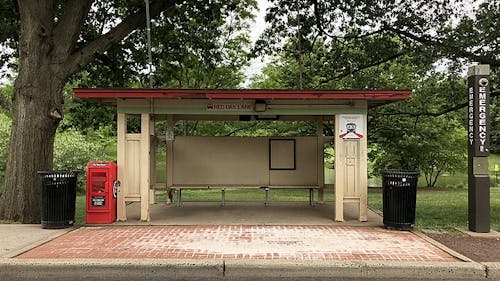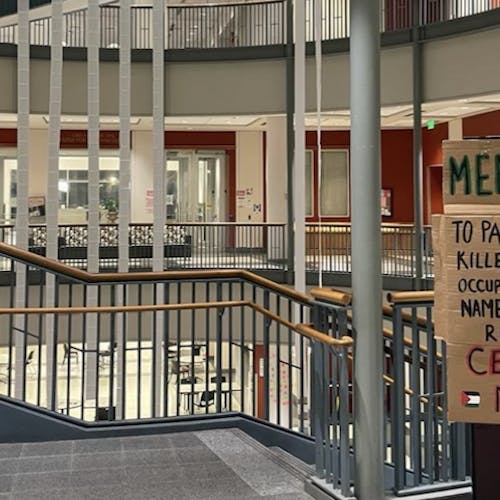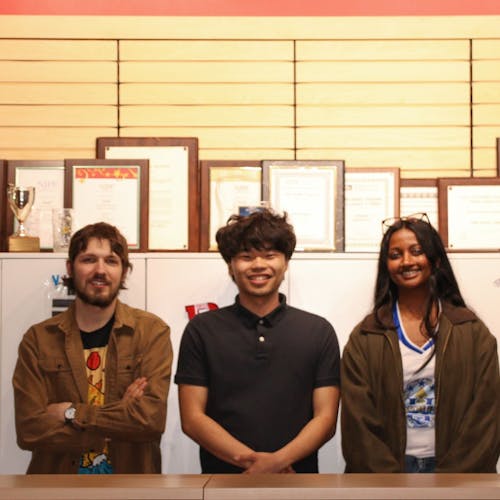Creator of RU There Yet? maps out bus tracking app's origins

In an interview with The Daily Targum, Kyle Bailey, a School of Engineering alum, spoke about his experience with the University bus fleet as a student and discussed how it inspired him to create the bus tracking app "RU There Yet?"
Bailey said that when he was a student at Rutgers from 2012 to 2016, students primarily relied on estimated arrival times on digital signs powered by NextBus GPS data at the campus bus stops. Additionally, bus tracking mobile apps only showed how many minutes until the next bus, not where the bus was on a map, he said.
Bailey said that as a student, he had been learning about iPhone programming and decided to try to create an app for students to see where the buses were located on a map.
"(The NextBus company was) publishing the GPS locations of all the buses, (but was not) offering a map with all those bus GPS locations on it. So I thought, 'I really need to just pull down this information and put it on a map,'" Bailey said.
Bailey launched the iPhone app "RU There Yet?" during the Spring 2015 semester while still attending Rutgers. Today, the app is still used by students with hundreds of daily users, he said.
Bailey has continued to work on the app past his graduation in 2016, keeping the interface modern and attractive to users and updating software. The University had previously changed its bus tracking system from NextBus to TransLoc and, most recently, transitioned from TransLoc to Passio GO!
Bailey said that due to the time and energy he puts into RU There Yet? and how confident he feels with its usefulness, he felt the app should cost money to demonstrate its value. He decided that adding a $1.99 price tag would be the most attractive and fair price point for users.
He said Apple takes a small cut of each sale, but he still earns most of the money from each purchase.
"There's a lot of different ways to make money off an application," he said. "Some people get involved in people's personal data from using an application. I don't collect anybody's personal information of any sort in the application. I didn't want to put any advertising in this application. I just wanted people to enjoy it forever. So I didn't want any ads ... I'm very satisfied with the ($1.99 price)."
The app allows users to select which Rutgers campus they are on — Camden, New Brunswick or Newark — and provides campus maps, real-time bus fleet locations and even turn-by-turn directions that incorporate the campus bus fleet, instructing users which bus they should take to get around Rutgers and when.
Bailey explained the three-layered system that allows the app to function. The user interface is what most people see, the top layer, but underneath that is the application processing requests, while below that is the operating systems and coding that connects to bus tracking technology, he said.
Bailey said that over the years, the University has never reached out to him to inquire about his app or to incorporate it into an official Rutgers app. He did say he used the application to demonstrate his capabilities and get a job as a student helping develop the official Rutgers Mobile App.
He said students have contacted him about his app, including this summer when Rutgers decided to switch from TransLoc to Passio GO!, letting him know his app did not work anymore.
"I was a bit shocked. I was like, 'Oh no, all my work is gone,' ... I was very upset with it," Bailey said.
He said that he looked into the new app and realized that due to his layered approach to the RU There Yet? app, he can update the app without making too many changes and keeping the user experience the same as before.
Bailey also said he is working on a free version of his app called Transit Locator, which will include advertisements. This app would also add other universities' bus systems so students from different schools can have another option to track their campus bus fleet.
"After I fix a few more things with the application, I'll release that update to Transit Locator. And then I'll try to market to these other schools and see if I can get anybody (interested)," he said.
Bailey said he currently has no plans to launch an Android version of the RU There Yet? app, citing Android apps' different coding process.
Earlier this semester, the RU There Yet? app reached the top of the Apple charts in the paid navigation category. Bailey said he has always been delighted with the app's success.
"I'm very proud of it. And I'd like to thank all the Rutgers students who support it too," he said.



